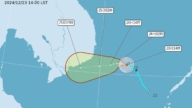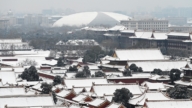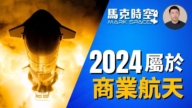【新唐人2013年11月25日讯】“中石化集团公司”在山东青岛的输油管线22号发生爆炸,截至24号13点,当局声称死亡人数52人;另外还有11人失踪、136人受伤,其中10人伤势严重。除此之外,还撤离了1万8千人。面对惨烈的损失,媒体和民众要求当局给出事故真相,追究相关人责任。请看报导。
大陆媒体对事故不仅纷纷报导,还翻出了事发管道的老底。
青岛当地媒体《半岛都市报》早前就有报导指称,事发的东黄复线管道,早年就被发现存在安全隐患,而且当年处在“荒郊野外”的管道,当前早已处于繁华市区内,而且管道上方还陆续被占压,甚至有不少楼房离管线的距离不足5米。
媒体还披露,东黄复线管道在2010年5月就发生过管道破裂,跑油240吨的事故。
北京《新京报》对事故则提出了四点质疑:
一、事发输油管道在两年前就已隐患重重,轻易进入市政管网是否存在设计缺陷?
二、输油管线紧挨居民区,当时是如何通过评估的,管线附近居民是否知情?
三、“中石化集团”10月份才刚刚完成全国性的安全大检查,当时有没有查出青岛输油管线的事故隐患?
四、原油泄漏大概在凌晨3时左右,爆炸实际上发生在10点30分左右,中间7个半小时,为何没有进行人员疏散?
《新华社》等中共官媒也追责青岛事故原因。
曾任香港《大公报》主笔兼新闻部主任的朱建国指出,青岛的事发管道事先就知道处于危险状态,甚至有人知道了漏油都不敢发到微博上,因为弄不好就会说你是谣言,要被刑拘。
中国政论专栏作家朱建国:“我认为这个事件与当局最近加紧清网、压制舆论监督,与这个有关。你看三中全会召开前后,发生了一系列重大事故,北京、山西、新疆都出现了重大的死伤事件。”
民众在网上纷纷表达了自己的愤怒,对事故做出了各种质疑。有的律师甚至建议,青岛大爆炸调查,必须首先控制市委书记和市长,否则不可能有真相!
巨大的事故也引起中共高层的震动,事发后中共总书记习近平、总理李克强很快作出了救援批示;24号,习近平还抵达了事发地青岛。
不过,多位业内人士在接受《中国网能源频道》采访时表示,“原油并非汽油或者柴油易于爆燃,现在又不是夏天气温高,油气混合物如果不是外力介入很难导致爆炸”。
香港《凤凰网》也质疑,根据青岛市官方微博的通报,为什么输油管线破裂地点与爆炸地点不一致?
原中石化工程师修先生:“应该是值得怀疑的。因为正在对中石油、中石化、胜利油田进行这种反腐调查的时候,发生这么大的爆炸,据说这是中石化历史上最大的一次爆炸。”
“中石油”系统今年8月末,4名在职高管接连被调查。9月初,刚从“中石油”董事长调任国务院国资委主任、党委副书记半年的蒋洁敏,也因涉嫌严重违纪被免职。而去年6月涉嫌违纪被调查的前四川省人大副主任郭永祥,曾经是蒋洁敏在“胜利油田”的同事。
原在胜利油田工作的修先生认为,随着蒋洁敏和郭永祥等被抓,被外界称为“胜利系”的官员坍塌。而且,中共前政治局常委周永康也当过“胜利油田”很长时间的一把手。在这个调查的关键时刻,在隶属于“胜利油田”的山东发生爆炸,比较可疑。
日前香港媒体也指出,中纪委书记王岐山反腐已指向“大人物”,“某退休常委已呼之欲出也”。
这样看来,在政法系统还残存影响力的周永康制造出“事故”来,也并非不可能。
采访/陈汉 编辑/宋风 后制/孙宁
Angry Chinese Seek Truth about Qingdao Explosion
The crude oil pipeline explosion of Sinopec in Qingdao,
Shandong claimed 52 lives.
As of 1pm of the 24th, 11 went missing, there were
136 injuries, of which 10 were serious.
It is reported that 18,000 people were evacuated.
Facing the heavy causalities, media and people ask
for the truth and an investigation.
The following is our report.
While Chinese media outlets are covering the incident,
many have also reported facts about the troubled pipelines.
Qingdao’s local media, Bandao News, reported earlier
that the alleged east yellow pipelines had hidden risks.
Pipelines were built in areas formerly considered
to be wilderness and bustling urbanization soon followed.
Many of the pipes are buried under buildings
with less than a five-meter clearance zone.
These east yellow pipelines reportedly leaked 240 tons
of oil in May of 2010 due to pipeline rupture.
Beijing News had several questions such as, was there
a design flaw in these municipal pipelines since problems
already existed two years ago?
How did these pipelines pass regulations since they are
so close to a residential area?
Were nearby residents made aware of the existence
of these lines?
Were there any problems with Qingdao pipelines during
Sinopec’s October nationwide safety inspection?
The oil spill happened at around 3:00 am,
whereas the explosion occurred at 10:30 am.
Beijing News also questioned why, within the seven
and a half hours, was there no evacuation?
The regime news agencies such as Xinhua News also
questioned who’s being held accountable for the explosion.
Zhu Jianguo, former news director of Hong Kong based
media Ta Kung Pao, indicates that people who were aware
of the risk or were aware of the oil leak would not dare tell
due to the possibility of being charged with spreading rumor.
Zhu Jianguo, political columnist: “I think this incident
is related to Internet censorship and repression of public opinion.
There have been a series of incidents with heavy casualties
such as in Beijing, Shanxi, and Xinjiang since the talk of the Third Plenum."
People have expressed their anger and doubts on the Internet.
There are also lawyers suggesting the only way to find out
the truth is to conduct an investigation
into the municipal party secretary and the mayor.
The explosion also shocked the party leadership.
Both Xi Jinping and Li Keqiang delivered
quick rescue instructions.
Xi Jinping also visited the troubled Qingdao
on the 24th.
According to an Energy.china.com report, specialists
indicated, “Crude oil is not as easy to combust as gas or diesel.
Especially without the heat of summertime, without
external forces, a fuel-air mixture explosion is very unlikely."
Hong Kong based ifeng.com also questioned why the explosion
took place at a different location than the pipeline rupture site.
Mr. Xiu, former engineer of Sinopec: “It is very suspicious.
At the time of anti-corruption, when PetroChina, Sinopec,
and Shengli Oilfield were all being investigated,
this explosion happened.
It is said to be the biggest in Sinopec history."
Four PetroChina executives have been investigated
since late August this year.
Early September, Jiang Jiemin, head of the state security
apparatus was also removed on charges of corruption
during his post as PetroChina executive.
Former deputy director of Sichuan Provincial People’s
Congress Guo Yongxiang, who was once a colleague
of Jiang Jiemin at Shengli Oilfield, was alleged
to have committed serious discipline violations last June.
Mr. Xiu was once an employee of Shengli Oilfield.
He believes that the Shengli Oilfield gang has collapsed
following the fall of Jiang Jiemin and Guo Yongxiang.
The former Politburo standing committee Zhou Yongkang
was also once the head of the Shengli Oilfield.
He suspects a relationship between the Shengli Oilfield
investigation and the explosion in Qingdao,
a Shengli Oilfield affiliate.
Recently Hong Kong media also reported that
the anti-corruption campaign led by the secretary
of the Central Commission for Discipline Inspection,
Wang Qishan, is pointing at a retired Standing Committee.
It is plausible to suspect that Zhou Yongkang,
with his remaining influence in the political and legal system,
could have carried out this explosion.
Interview/ChenHan Edit/SongFeng Post-Production/SunNing




























